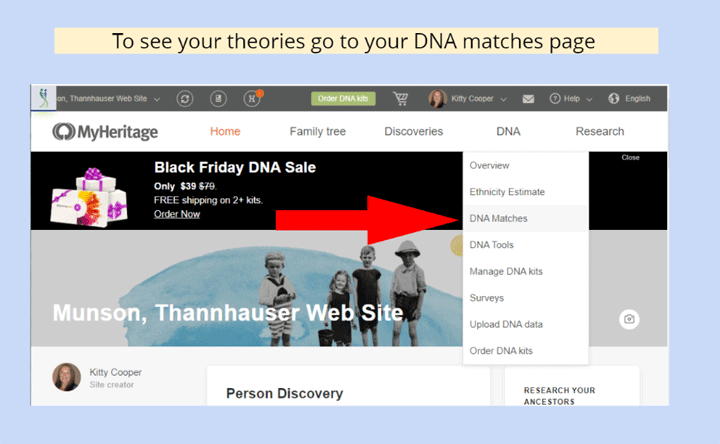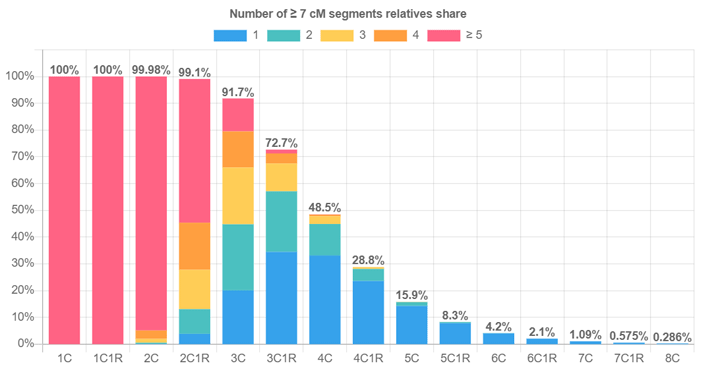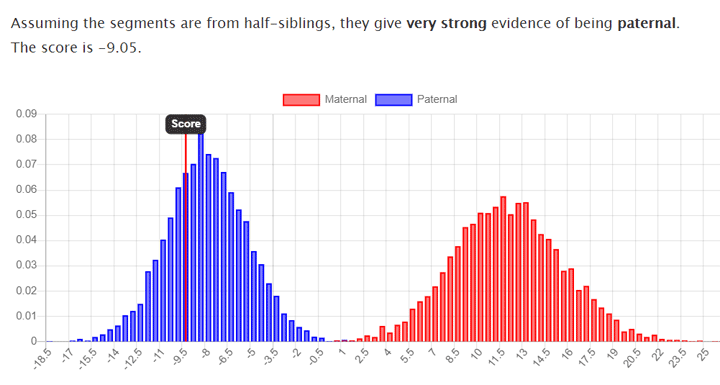MyHeritage has been producing a wonderful series of live presentations via their FaceBook page. At 11 a.m. Monday (tomorrow) California time I will be giving a talk on how to use the Theory of Family Relativity. If you come to this free lecture you might win a free DNA kit plus you can ask me DNA questions live.
Otherwise you can view it later by clicking on the videos tab on their page. I am amazed that my last video for them about finding cousins using DNA at MyHeritage had over 20K views!

One of the slides in my talk, slides are at https://slides.com/kittycooper/myheritagetofr
In other news from MyHeritage, this year they finally have the ability to give a gift membership in time for the holidays and they have already started their Black Friday sale.
UPDATE 23-Nov-2020: The video of my talk is now available on the MyHeritage FaceBook page here:https://www.facebook.com/6572227821/videos/150034700143856 and the image above is linked to the slides. Plus here is the Black Friday sales link: this limited-time offer ends November 27, and the price is $39, plus free shipping on 2+ kits if ordering from this link.

